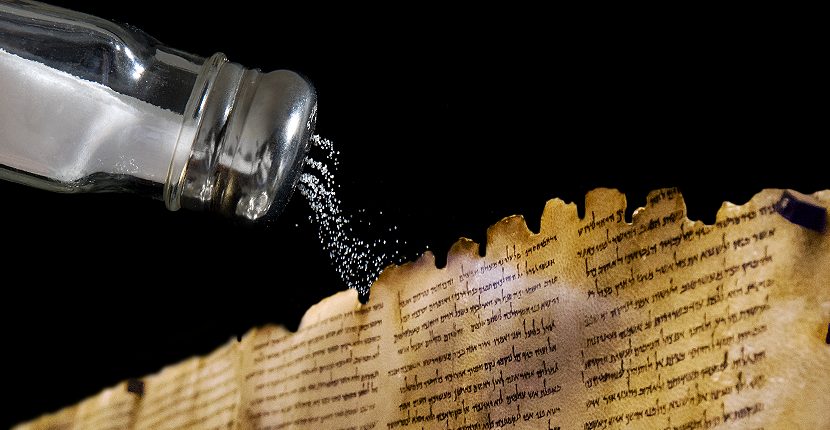The Dead Sea Scrolls have been fascinating experts for over half a century. These uncovered and ancient texts are still revealing their secrets to modern day scientists, as a new study shows.
Published on the Science Advances website, the investigation shines a light on the Temple Scroll. This 8 m long example, named after its contents which relate to an unrealized Jewish temple, is remarkably well-preserved. But why has it fared better than its papery fellows? The study found out by examining the Scroll’s surface in detail.
The 19 leather strips which comprise the Temple Scroll are “whitened through treatment with a salt called alum” according to the Guardian. And it’s this mineral element which is crucial to preservation, with the article going on to say “the text is written on a thick mineral-containing layer that forms a writing surface”.
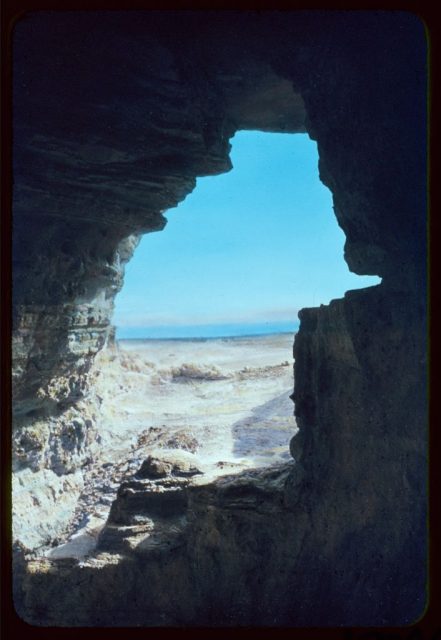
After analysis using x-rays and spectroscopic equipment, it appears the sulfate layer “points toward a unique ancient production technology,” Science Advances states, “in which the parchment was modified through the addition of the inorganic layer as a writing surface.”
Because the Temple Scroll is the only scroll to have received this treatment, it has set academic minds buzzing about what this could mean. Most importantly, the minerals in question are not from the Dead Sea Region. The Guardian quotes study co-author Asst Prof Admir Masic, who believes “These salts are not typical for anything we knew about associated with this period and parchment making.”
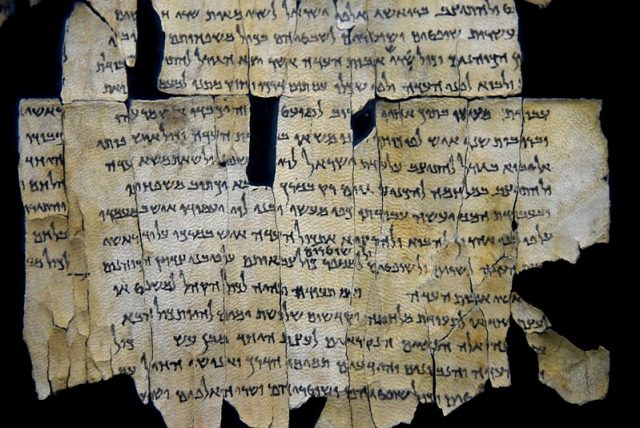
The assumption is that the Temple Scroll was prepared somewhere other than the Dead Sea Region, though some disagree. It’s possible the Scroll was brought to the area from outside. However, just because the solution comes from another place doesn’t mean it couldn’t have been supplied on site.
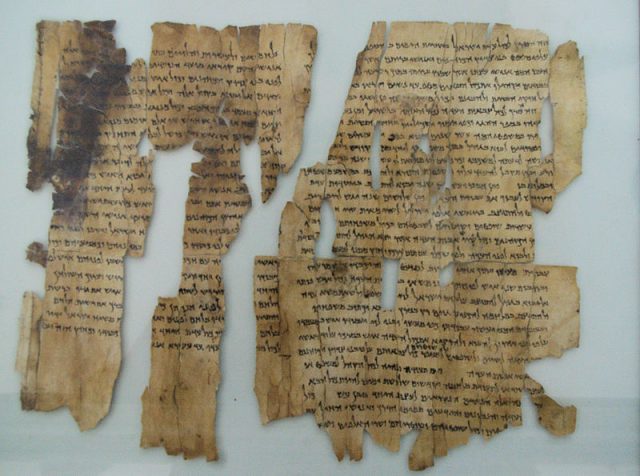
The latest find forms part of a legendary historical chapter. Immensely significant to Judaic religion, the Dead Sea Scrolls are at least 2,000 years old. They came to light not through archaeological endeavor, but a teenager’s carelessness. In the late 1940s a young Bedouin shepherd threw a rock into a cave on the Sea’s north west shore near Qumran (today the West Bank). This action accidentally alerted the 20th century to the Scrolls’ existence, with the rock loudly breaking clay jars in which they were contained.
Related Video:
A spiritual treasure trove of some 800 – 900 scrolls were then found in the surrounding caves. Live Science paints a less romantic picture, writing they were found “under piles of debris and bat guano”. The site describes “biblical texts, ancient calendars and early astronomical observations”.
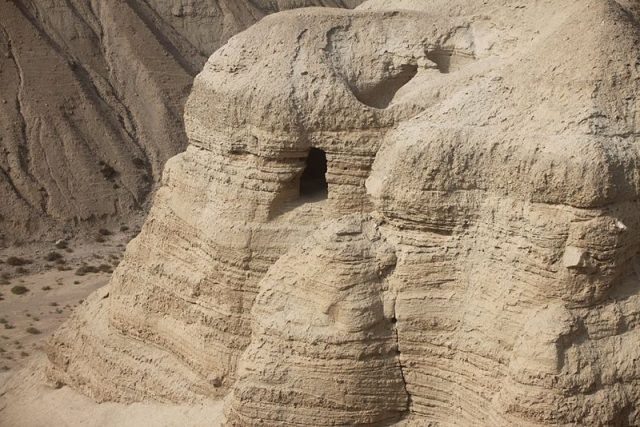
The Scrolls have made some eventful journeys over the years. Four of the originals wound up in the classified section of the Wall Street journal in 1954! The property of a Syrian Orthodox archbishop Athanasius Yeshue Samuel, he couldn’t interest American universities in the Scrolls, so resorted to advertising them in print.
Despite their iconic status, no-one knows for sure who produced the Scrolls. History.com wrote in 2013 about “the prevailing theory” that “they are the work of a Jewish population (the Essenes) that inhabited Qumran until Roman troops destroyed the settlement around 70 A.D…. Some scholars have credited other groups with producing the scrolls, including early Christians and Jews from Jerusalem who passed through Qumran while fleeing the Romans.”
While the Scrolls still require a lot of examination, the real question is how long will they last? The Temple Scroll’s sulfate surface has preserved its writings, but the minerals could also prove harmful.
Related Article: Museum of the Bible Purchased Fake Fragments of the Dead Sea Scrolls
Live Science observes, “Because the salts detected on the scroll are known to suck moisture out of the air, their presence could ‘accelerate [the scroll’s] degradation’ if not stored properly, the authors said.”
On a brighter note, the unique preservation process gives scientists some clues as to how the Scrolls can be kept as intact as possible for future generations to marvel at.
